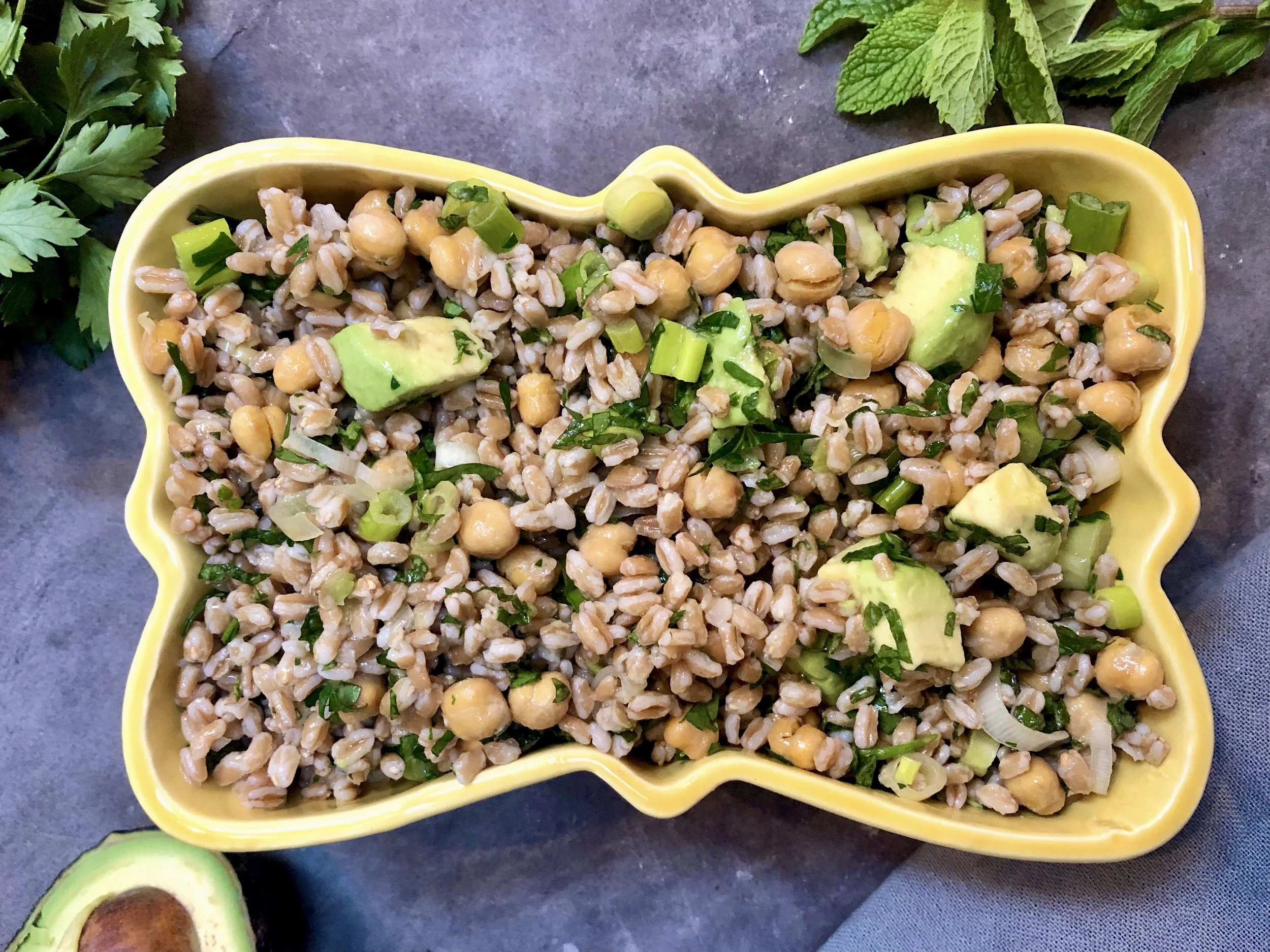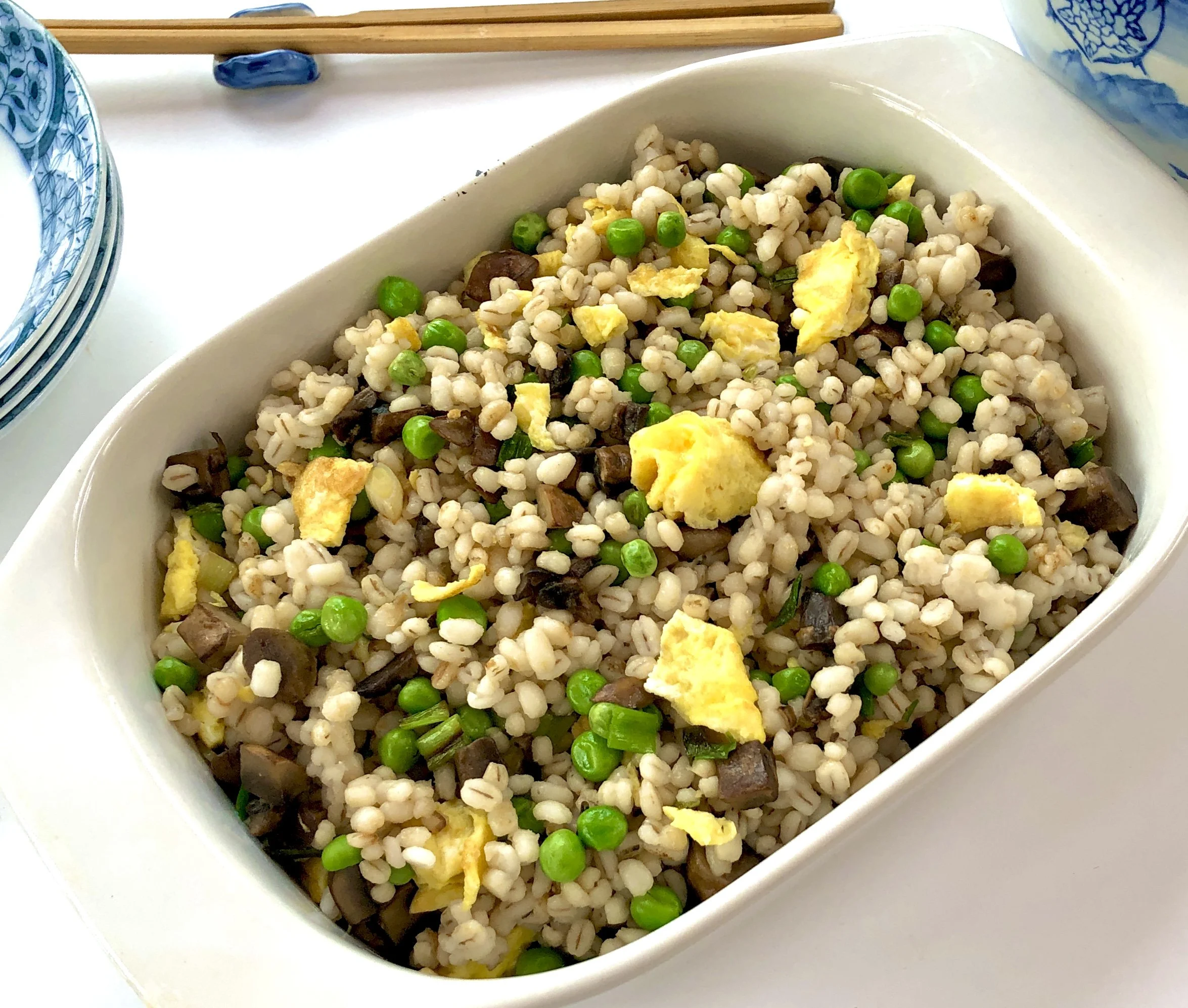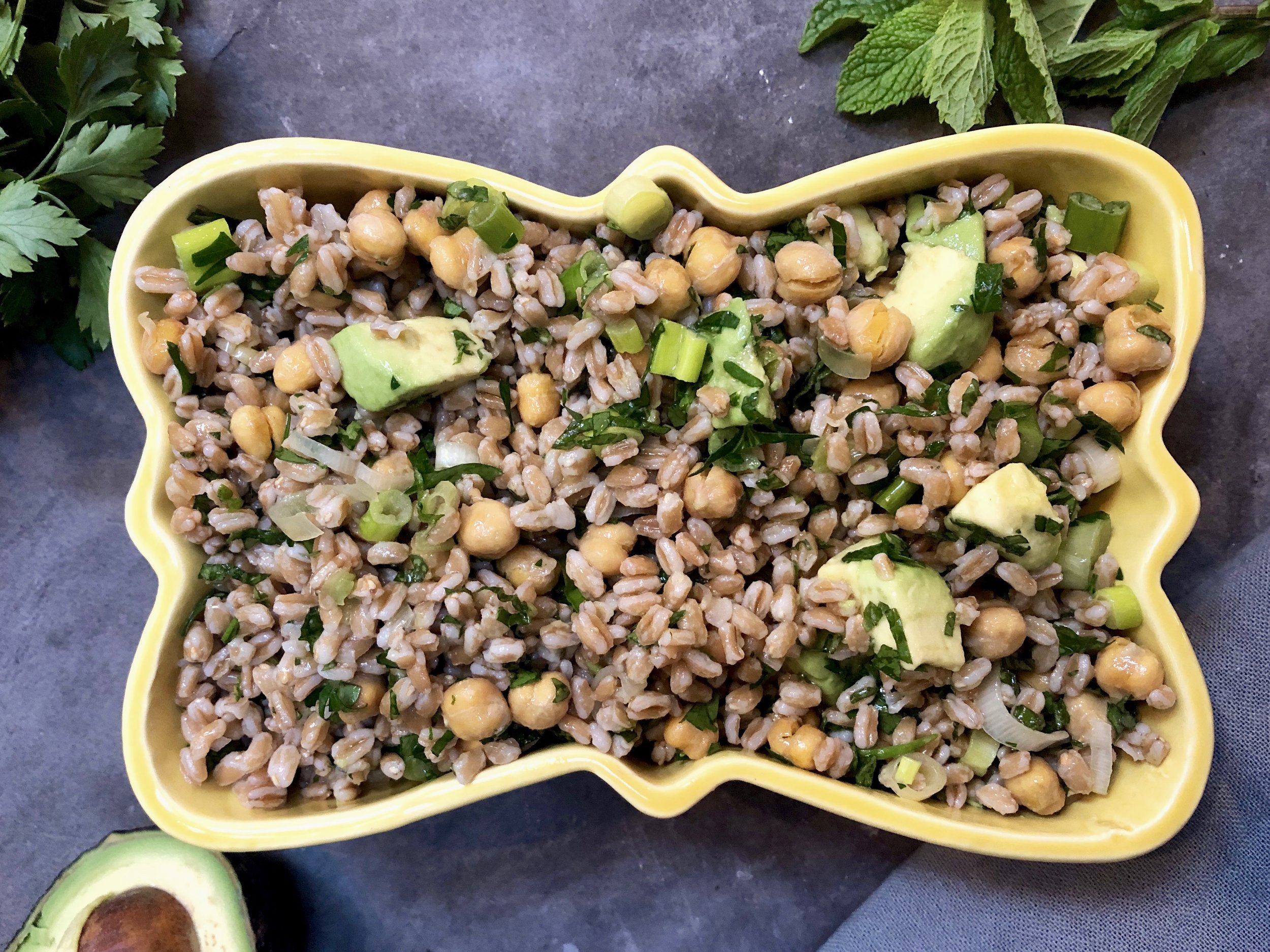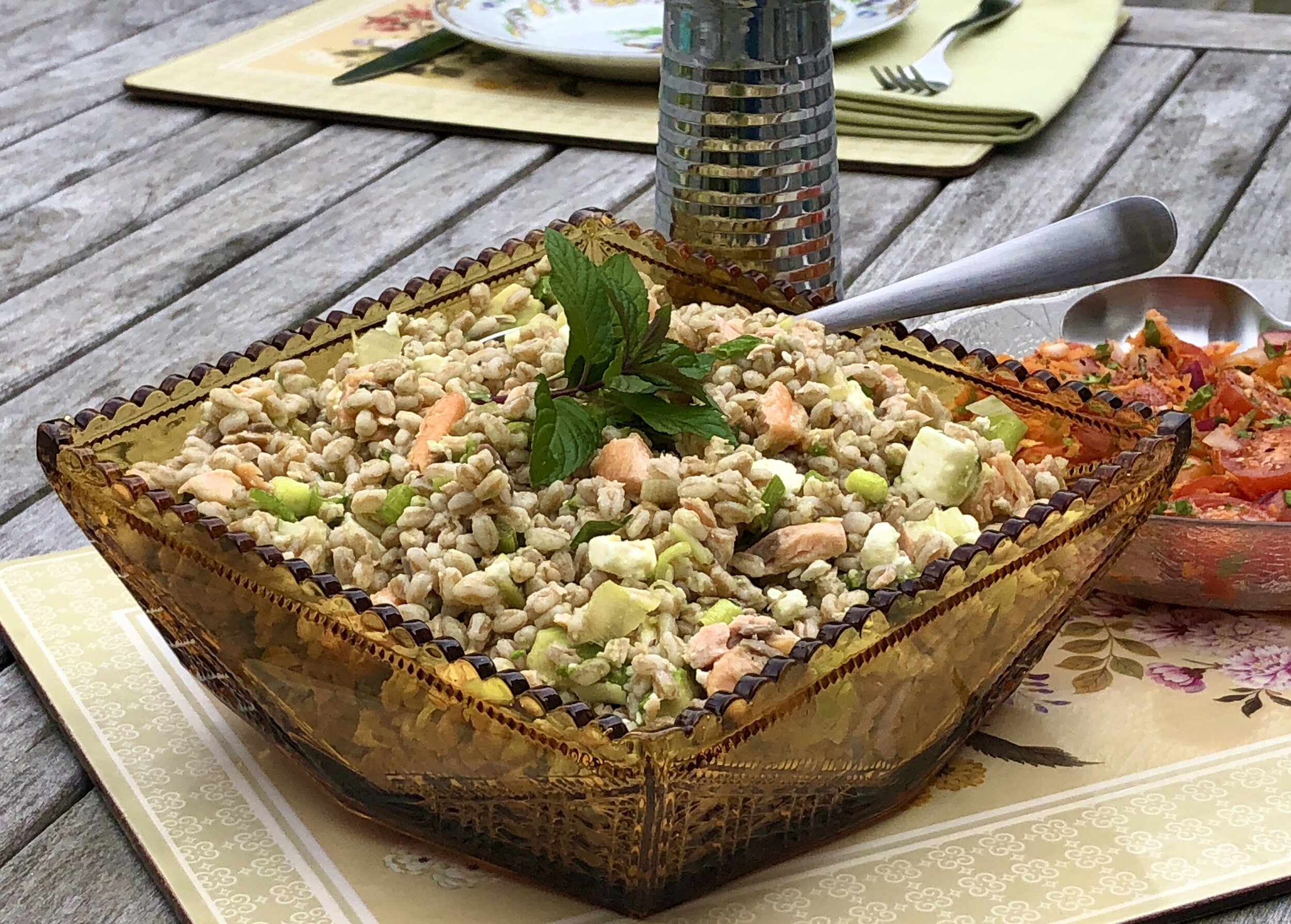Here’s an easy summer salad — main dish or side dish. Make it ahead (but don’t add the dressing until about 15 minutes before you serve it).
Any whole grain will do. I like farro the best so I usually make it with that, but have also used freekeh, barley and wheatberries. All good!
FARRO AND ROASTED CHICK PEA SALAD
1 can chick peas (15 ounces)
3-4 tablespoons olive oil, approximately
Salt to taste
1 cup farro
2 cups water
3-4 scallions, chopped
1 avocado, peeled and diced
2-3 tablespoons wine vinegar
1/4 cup chopped fresh parsley
3 tablespoons chopped fresh mint
1/2 teaspoon ground cumin
salt to taste
Aleppo pepper, optional
Preheat the oven to 425 degrees. Drain the chick peas and place them on a baking sheet. Pour 2 teaspoons olive oil over them and toss to coat. Sprinkle with salt. Roast for about 20 minutes or until crispy and lightly browned. Remove from the oven and let cool. While the vegetables are roasting, place the farro and water in a saucepan and bring the liquid to a boil over high heat. Lower the heat, cover the pan and simmer for 25-30 or until the grain is tender, but still chewy. Let cool slightly and place in a mixing bowl. Add the chick peas, scallions and avocado and toss the ingredients to distribute them evenly. Pour in 2 tablespoons olive oil and toss the ingredients. Pour in the wine vinegar, add the parsley, mint and cumin and toss the ingredients again. Season to taste with salt and Aleppo pepper. Stir in more olive oil and/or wine vinegar if you wish.
Makes 6-8 servings









